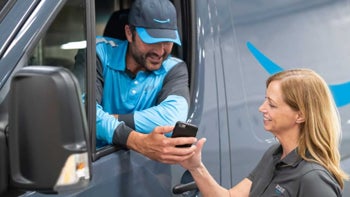Here's how hanging an iPhone from a tree helped Amazon drivers cheat to score more gigs

Amazon Flex is the app used by drivers who are looking to pick up and deliver a Prime delivery to an Amazon customer. Similar to a dispatch system, Amazon Flex alerts drivers when there are packages that are ready to be delivered. Since each delivery is worth $15 to a driver (not to mention the possibility of receiving a nice juicy tip), taking advantage of a method used by some drivers that resulted in some drivers stuffing some extra bread in their pockets.
Smartphones hanging on a tree near Whole Foods locations helped Amazon drivers game the system and make more money
If you've ever noticed several smartphones strung up on trees outside Whole Foods locations in Las Vegas and Washington D.C., or outside Whole Foods and Amazon delivery stations in Chicago, you might have thought that you had stumbled across testing for some strange mobile app. But what you really found was the method used by drivers to get first crack at new orders. By placing their phones in the trees, these drivers' trucks would appear to be closer to the pick-up locations than they really were. Additionally, these drivers also patched into Amazon's dispatch network. As a result, these drivers received first crack at getting new orders even though they might be, in reality, many more miles away from the pick-up location than rival drivers.

Amazon drivers would hang smartphones from a tree near a Whole Foods Store in order to game the delivery system
One driver has noticed that the phones and the people that lingered around them have disappeared from the trees. A driver who lives near a Whole Food in Tennessee says that he is no longer receiving the offers every morning to deliver from Whole Foods. While this would indicate that Amazon has put an end to this unfair practice, the company has yet to declare victory. Last month, the company said that it would investigate how rogue drivers were able to use the app in their favor. Back in June, Amazon warned drivers not to trick the system in order to take orders from other drivers. "Waiting in the parking lot or using the store Wi-Fi is not an effective way to increase one's chances of seeing an instant offer."
Drivers in the know would sync with the phones hanging in the trees and waited to receive an order pickup. Amazon reportedly was forced to change a few lines of code in order to end the unfair practice. Some had figured that the company had merely created an area around the stores where cell service was disconnected, but wasn't the case since it would have created longer delivery times for consumers. When Amazon designed the system, it contemplated several ways to disseminate the orders to drivers. According to a person familiar with the plan, having a delivery arrive quickly to the customer's house was the top priority.
Securing more deliveries is important for a gig worker since he/she gets paid each time a delivery is made. That is a huge difference than how hourly employees made their money; the latter receive a paycheck whether or not demand is heavy. And when you add that to the ability of rogue drivers to grab a signal from a phone hung up on a tree before drivers waiting in the store parking lot see it, a decent amount of cash is at stake. Those familiar with the drivers' plans say that a good hotspot in an urban area can determine the location of a smartphone to within 20 feet.
Amazon declined to specifically address the gaming of its system but did leave a statement that said, "Instant Offers are another way for delivery partners to be their own boss and work on their own schedule. Waiting in the parking lot or using the store Wi-Fi is not an effective way to increase one’s chances of seeing an instant offer."










Things that are NOT allowed: